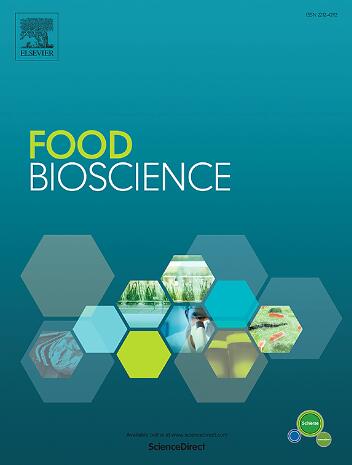Fluorescent signal-based molecular method for identification and quantification of adulteration in Panax ginseng from raw materials to processed products
IF 5.9
1区 农林科学
Q1 FOOD SCIENCE & TECHNOLOGY
引用次数: 0
Abstract
Economically motivated and inadvertent adulteration of Panax ginseng alters the dosage accuracy and composition of ginseng products, ultimately compromising their efficacy and safety. Reliable methods to identify and quantify such adulteration remain inadequately established. In this study, a molecular quantification method (Herb-Q) that integrates species-specific single nucleotide polymorphism (SNP) detection with allelic fluorescence signal was developed to identify and quantify ginseng and its adulterants. Three SNPs, distinguishing P. ginseng, P. quinquefolius, and P. notoginseng from other species, were screened from 117 chloroplast genomes and validated using 48 actual samples. Herb-Q exhibits high repeatability and linearity (R2 > 0.9900), with limits of detection and quantification down to 1 ng. Its applicability to complex matrices was validated by testing 10 batches of herbal products (HPs) in powder, tablet, and pill forms, of which five were found to be adulterated, with adulteration levels ranging from 6 % to 86 %. The standard curve, correlating allelic fluorescence signals with weight, was generated by introducing six weight ratios of adulterants, and target species quantification was achieved using external standards. The quantitative accuracy of Herb-Q in mixed raw materials and processed products exceeded 95 %. This study presents a novel tool for the quantitative tracking of P. ginseng throughout the food product supply chain and demonstrates its promising potential to combat food labeling fraud.

基于荧光信号的分子方法,用于识别和定量三七从原料到加工产品的掺假情况
出于经济动机和无意中掺假人参改变了人参产品的剂量准确性和成分,最终损害了其功效和安全性。鉴别和量化这种掺假的可靠方法仍然没有充分建立。本研究建立了一种将种特异性单核苷酸多态性(SNP)检测与等位基因荧光信号相结合的分子定量方法(Herb-Q),用于人参及其掺假物的鉴定和定量。从117个叶绿体基因组中筛选出3个snp,用于区分人参、西洋参和三七,并使用48个实际样本进行验证。Herb-Q具有较高的重复性和线性(R2 >;0.9900),检测和定量限低至1 ng。通过对粉末、片剂和丸剂形式的10批草药产品(hp)进行检测,验证了其对复杂基质的适用性,其中5批被发现掺假,掺假水平从6%到86%不等。通过引入6种掺假物的权重比,生成等位基因荧光信号与质量的相关标准曲线,并利用外部标准实现靶种的定量。Herb-Q在混合原料和加工产品中的定量准确度超过95%。本研究提出了一种新的工具,用于在整个食品供应链中定量跟踪人参,并展示了其打击食品标签欺诈的潜力。
本文章由计算机程序翻译,如有差异,请以英文原文为准。
求助全文
约1分钟内获得全文
求助全文
来源期刊

Food Bioscience
Biochemistry, Genetics and Molecular Biology-Biochemistry
CiteScore
6.40
自引率
5.80%
发文量
671
审稿时长
27 days
期刊介绍:
Food Bioscience is a peer-reviewed journal that aims to provide a forum for recent developments in the field of bio-related food research. The journal focuses on both fundamental and applied research worldwide, with special attention to ethnic and cultural aspects of food bioresearch.
 求助内容:
求助内容: 应助结果提醒方式:
应助结果提醒方式:


